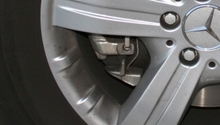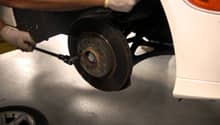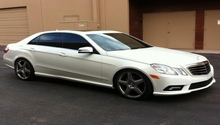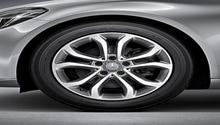Mercedes-Benz E-Class: Why Do My Brakes Squeak?
Brakes can squeak due to a number of reasons. What ever the case, it can be really embarrassing, especially when it occurs on something that's supposed to be a luxury car. The following article lists three common reasons why your E-Class brakes may be squeaking.
This article applies to the Mercedes-Benz E-Class (2010-present).
It may come as a surprise, but one of the most common problems found on a Mercedes-Benz W212 E-Class is squeaking brakes. In most cases, the problem begins when the cars have less than 10,000 miles. The causes for the squeak can range from a dirty brake assembly to damaged components. Diagnosing a brake squeak can be tedious, so this article will help explain what the three common causes for squeaking brakes are and how you can repair them.

Materials Needed
- Jack and jack stands
- Brake fluid
- Brake lubricant
- Metric 3/8 inch socket set
- Brake cleaner
- Brake bleed kit
Step 1 – Check for brake dust
Brake dust causes the rotors to squeak.
When brake dust manages to form in-between the pads and rotor, the uneven surfaces will begin creating noise. W212s are prone to producing excessive brake dust as the brake dust is a by-product of the type of material used on the pads. Switching to quieter pads may reduce the dust and braking ability as well.
(Related Article: Mercedes-Benz E-Class Brake Pad Reviews
To inspect for brake dust:
- Raise and secure the vehicle.
- Remove the 17mm lug nuts from the wheel.
- Remove the wheel.
- Carefully inspect the brake pads and rotors for dust, try not to touch the rotor with your fingers.
- Take brake cleaner and spray the braking assembly.
- Let it dry, then reassemble the wheels.
- Test drive the car.
(Related Article: How to Jack Up Your E-Class - MBWorld.org)
Pro Tip
Brake dust will not impede the stopping performance of your car. If noise is the only problem, then cleaning the brake dust off the assembly may work.

Step 2 – Use brake lubricant on the caliper
There may be too much friction between the caliper piston and the pad.
Brake lubricant is a special substance that gets applied between the pads and caliper. It absorbs the vibrations created by braking and allows the mechanism to operate smoothly so that the pads can be worn evenly. Failure to apply the lubricant, sometimes referred to as a paste, can cause too much friction in-between the components, resulting in a high-pitched squeal.
- Raise the vehicle and support it using jack stands.
- Loosen the 17mm lug nuts.
- Remove the wheels.
- Locate the lower caliper bolt and loosen it.
- Break loose the upper caliper bolt, but do not remove it.
- Flip the caliper up to reveal the brake pads.
- Spread brake caliper lubricant thoroughly onto each pad.
- Reassemble the brake caliper and take the car out for a test drive.

Step 3 – Turn or replace the rotors and brake pads
The excessive wear on the rotor may have caused them to warp.
If the above solutions have failed to rid the car of the brake squeak, then there is a more serious problem to attend to. It is recommended to replace the brake pads and rotors in one go, in order to avoid any future mishaps. If a rotor is put under extreme brake use or experiences a manufacturing defect, it can warp under a load. The warp will cause the brake pads to wear unevenly, which in-turn squeak and lose braking performance, and thus the car vibrates.
- Safely raise and secure the vehicle.
- Loosen and remove the 17mm lug nuts.
- Loosen the upper and lower bolts to remove the caliper bracket.
- Grab the brake pads by hand to remove them. Remove the caliper bracket and brake pads.
- The rotor is held in place by T-27 mounting screws. Loosen and remove them.
- Remove the rotor.
- If you are reusing the older rotor, take them to a machine shop and have them turned. If not, continue to the next step.
- Reinstall the rotor.
- Install the caliper bracket.
- Place the new brake pads on along with brake lube.
- Install the caliper.
- Mount the wheels and test the brakes.
(Related Article: How to Replace Brake Pads/Calipers/Rotors on Mercedes-Benz E-Class - MBWorld.org)
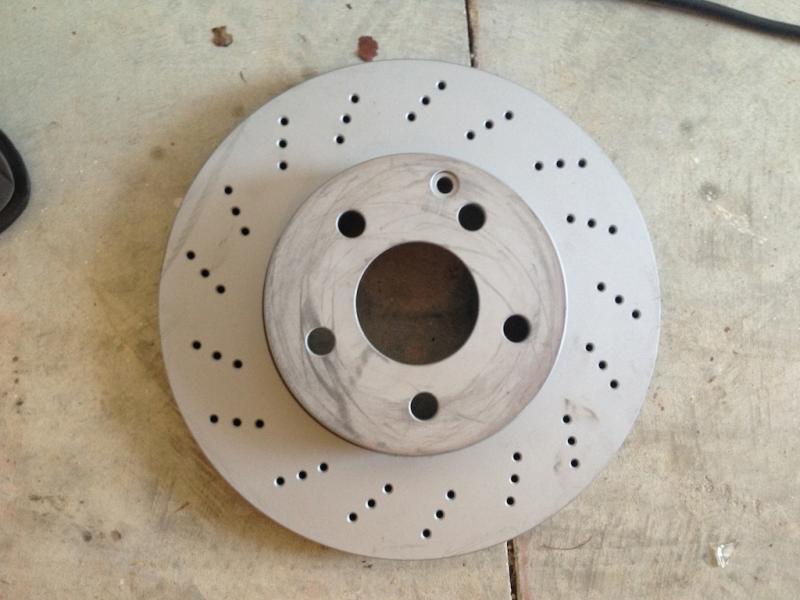
Figure 3. Replace the rotor. 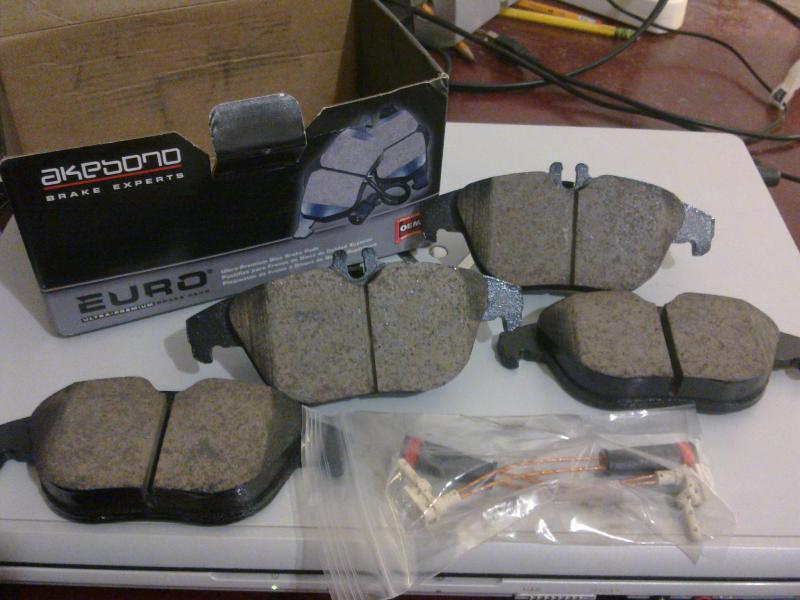
Figure 4. Replace the brake pads.
Related Discussions
- Brakes Squeaking, Need Help - MBWorld.org
- Best Technique to Clean Brake Calipers? - MBWorld.org
- Squeaky Brake Problem Solved....For Now - MBWorld.org
- Brake Pad and Rotors Price - MBWorld.org

